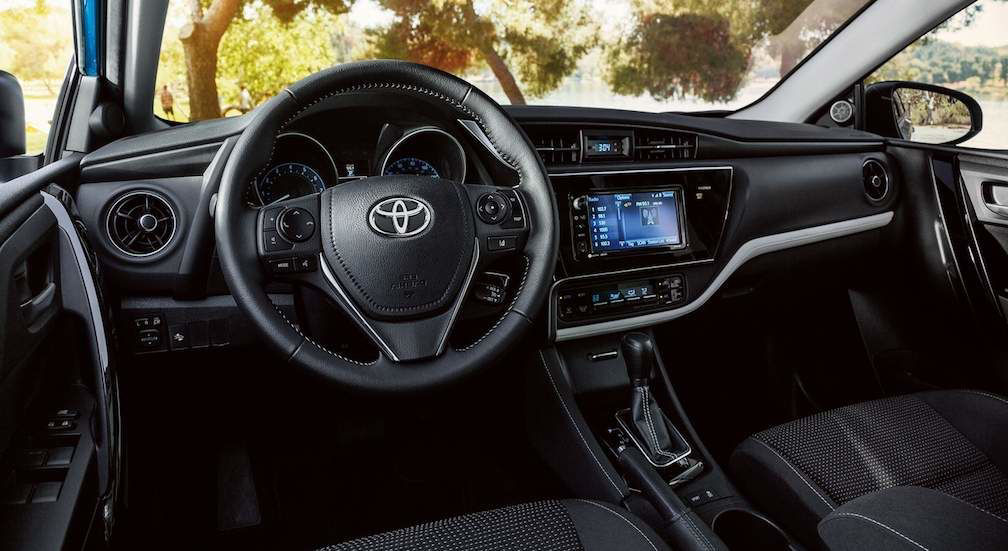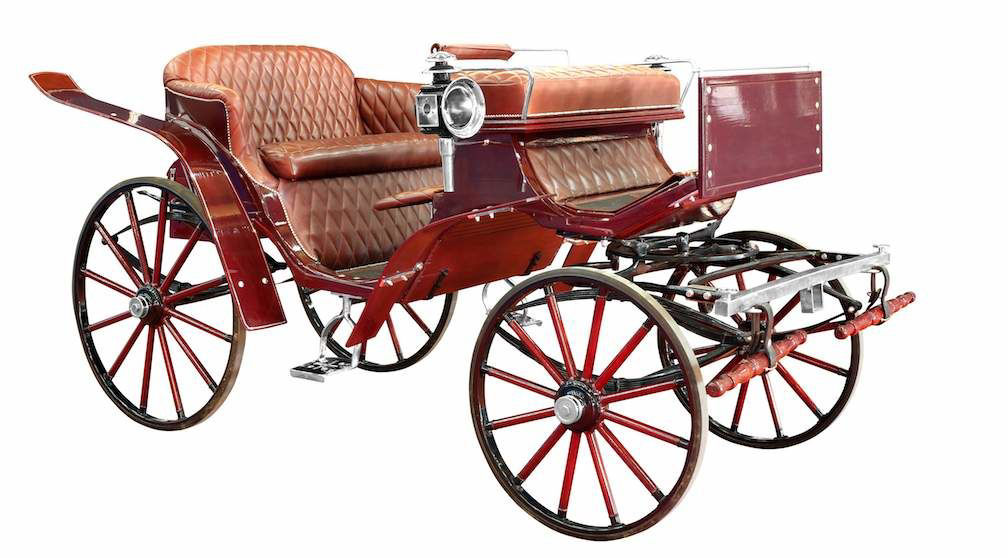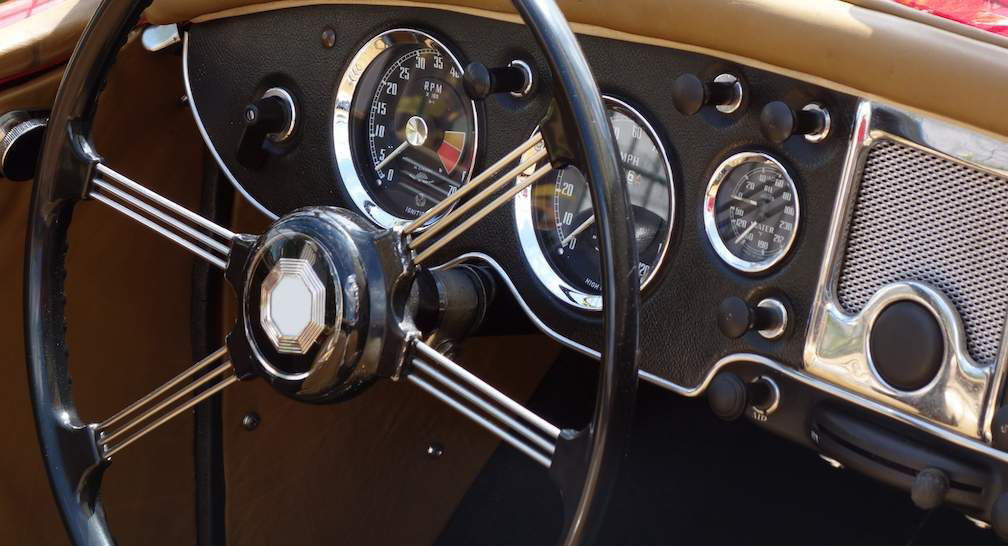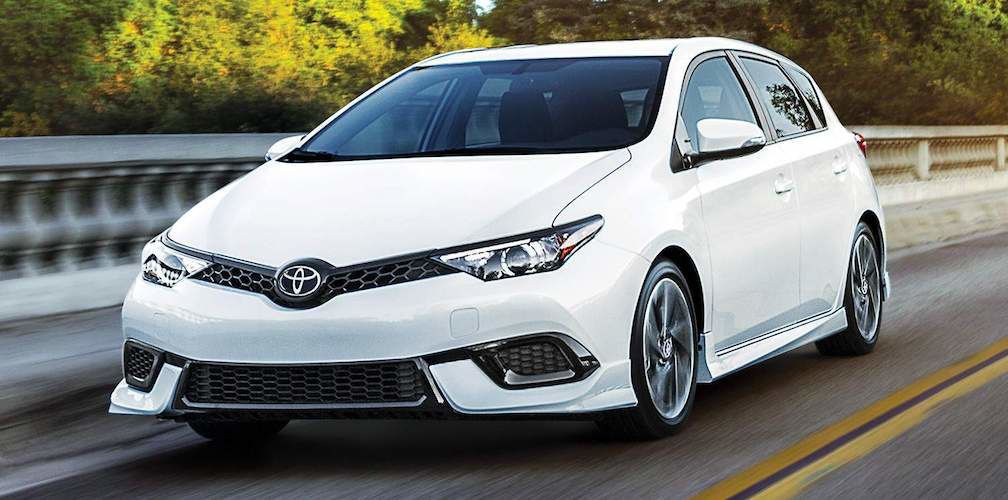Select a province & language
Entrance to this website assumes you have read and agree to these Legal Terms and Conditions and the Privacy Policy.
Entrance to this website assumes you have read and agree to these Legal Terms and Conditions and the Privacy Policy.

When it comes to dashboard design, we’ve come a long, long way. Back when “voice recognition” meant yelling at your horse, a dashboard was simply a plank of wood or leather attached to a carriage to protect the driver from the mud splashed by the horses’ hooves.
Today, high resolution displays can do everything from directing you to your friend’s cottage, to letting you know if the weather will be nice enough to start up the barbeque when you get there.
Of course, there were a few key developments along the way. After we upgraded to “horseless carriages” around the turn of the century, the dashboard remained useful as a panel that protected passengers from the heat and oil of the engine.

Yet these early boards were still pretty spartan, with nary a glovebox in sight. The first mass-produced cars had just a couple of switches to fiddle with and a simple speedometer (speed limits at the time were rarely higher than 30km/h).
It wasn’t until the 1930’s, when airplanes became a cultural phenomenon, that car dashboards started getting more complex. Airplane cockpits were covered with nifty dials and dashes, and drivers of the era wanted to feel like they too were piloting the latest technology. Dashboards quickly filled up with meters and gauges in response.

Dashboard design has continued to respond to cultural and technological shifts over the years. Cigarette lighters arrived on the scene in the mid-1920’s, then were sidelined as an optional feature in the mid-2000s to reflect changing tastes.
Today, you’re likely to find a USB phone charger in its place. There may have been some unfortunate trends and gimmicks (just look at the short-lived mounted record players of the 50s and 60s), but not everything has changed - while the latest electronic interfaces and digital displays enable drivers to navigate safely and monitor their car’s performance, they can still use these screens to play their favourite classic LP.
With so much technology at our disposal, it can be tempting to fit as many features as possible onto a dashboard. But contemporary car manufacturers are increasingly prioritizing ergonomic and UX design principles when selecting which screens and meters will take up scarce dashboard real estate.
Studies that analyze the most effective dashboard font choices and track distracted drivers’ eye movements have led to more streamlined layouts that prioritize driver safety and avoid overwhelming them with information.
Looking to the future, Toyota is leading the way in innovative dashboard design. The intricate surface texture of the Prius dashboard, a fuel-efficient electric hybrid vehicle, was based off the unique patterns of leaf veins.
Meanwhile, visionary dashboard designs like those of the Toyota Concept-i car remove the traditional barriers between driver, car, and their surrounding environment through the vehicle’s biometric sensors, 3D displays, and AI integration.
From a car’s wheels to its windows, Toyota auto engineers follow a design philosophy based on the phrase An Raku Tan — reliable, safe, and simple. These guiding principles ensure that Toyota dashboards remain intuitive and ergonomic, even with the introduction of new technologies.
Driving while distracted is incredibly dangerous, and a cluttered or clunky dashboard can overstimulate the eyes. Toyota always endeavours to incorporate new features in a simple, streamlined way that maintains driver comfort and safety.
The Corolla iM maintains the An Raku Tan commitment to reliability, safety, and simplicity — while still putting cutting-edge features at your fingertips:
Display: A high-resolution 7-inch screen ensures your auto-infotainment needs are covered, while backup camera improves driver visibility.
Audio: Everyone knows that the driver gets to pick the music. In the Corolla iM, choose from the AM/FM player, the 100,000+ station Aha Radio app, or your own music library through wheel-mounted controls that let you quickly skip a song without stealing your attention. Meanwhile, the car’s six speakers ensure that every passenger can properly appreciate your meticulously curated road trip playlist.
Voice Recognition. To minimize distractions, the Corolla iM’s voice recognition support is even more intuitive to use: Just press the button on the steering wheel, speak one of the supported commands, and away you go.
